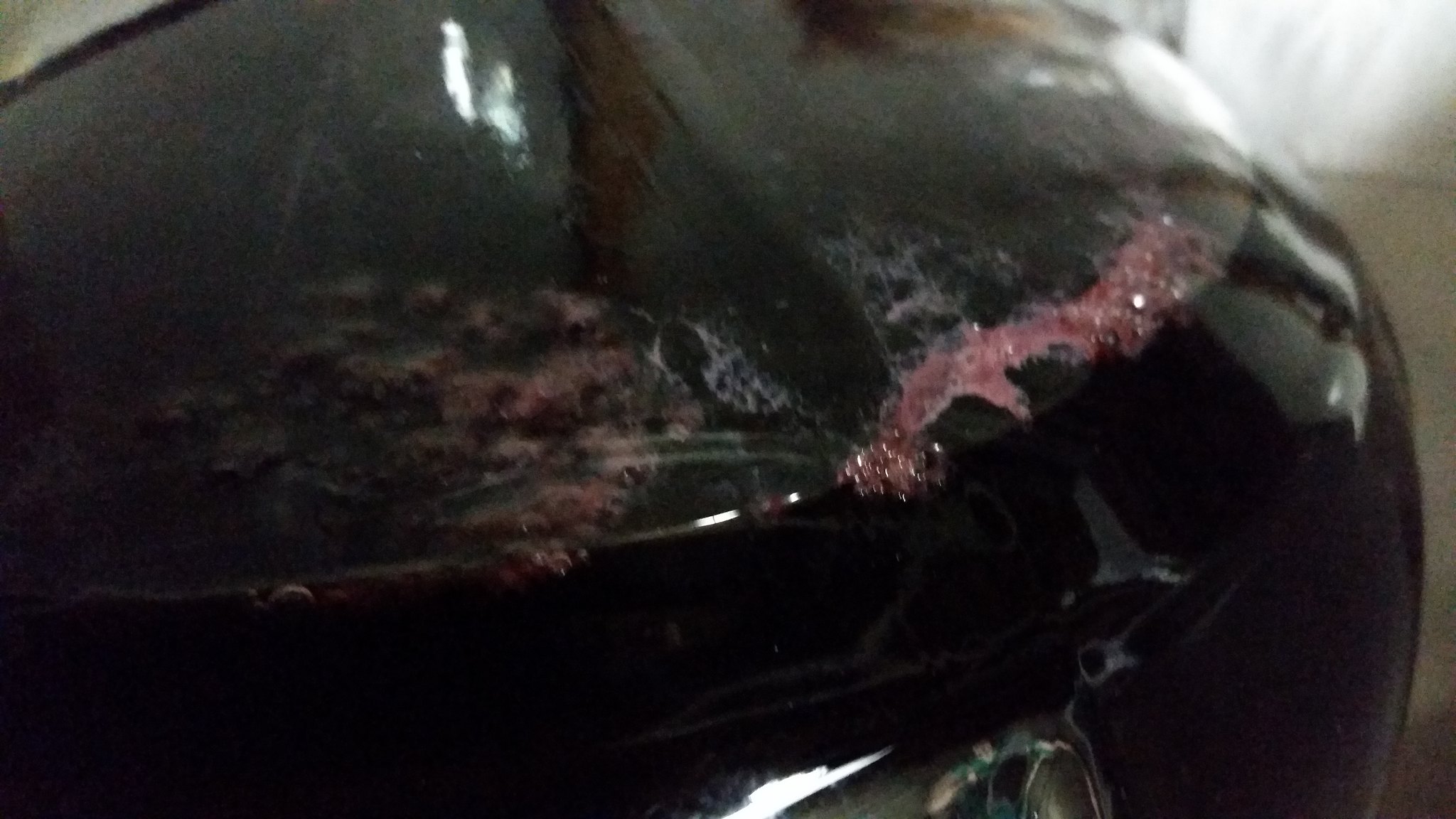When we got into wine making about 5 months ago we purchased our first kit, which was a Cru International "Australia Cabernet Sauvignon Style". However, when it arrived, the juice had leaked inside the box. We called Morewine to ask what we should do, and they were super nice and helpful (especially for us, this being our first ever kit). Their customer service said to make it anyway and they would send us a replacement kit at no charge. Probably the best answer we could have heard. That first kit is now bottle aging, so we started our replacement kit! 
We have done a few other kits that are still aging, so we are a little more confident in our skills, which means it is time for us to tinker with this duplicate kit. Right now my plan is to just change the yeast from EC-1118 to RC-212. I hope to learn the difference a yeast can make in the flavor of the wine. I've read on this forum and on many other websites about what a yeast can do for taste and mouth feel, but I'm still learning so it's time to see what I actually notice.
Anyway the kit is a 12L kit with dried skins and is described as: "A classic Cabernet Sauvignon with a nose of blackcurrants, dark chocolate, and subtle toasty notes with hints of coffee and vanilla notes on the palate." Sounds right in line with my taste.
We started the kit on 6/18, but I have been travelling for work, so I haven't been able to start a thread. We are following the directions as listed by RJS just like with the first kit. The only change is the yeast and some other small things like aging time, but my goal is to compare the taste of this "free" kit to the original with the EC-1118.
The juice smells and tastes amazing, just like the first batch. I prepared the bentonite, dumped in the juice, and added both the oak chips and dried skins to the mesh bag before tying it and dropping it in the must. The first kit we did, we added the oak "tea bags" into the must (per instructions), and they eventually popped little holes after gentle stirring and let all the oak out, so this time we just opened the bags and added to the mesh with the skins.
After topping up to 6 gallons, the SG was 1.088 @ 78F.
6/23 - 5 days later, the SG dropped to 1.020 @ 74F, so we racked into glass to let it finish fermenting. RJS instructions have you rack at 1.020, and we noticed that Winexpert is different, having you rack at 1.010 for the kits we have done. Either way, we are following the RJS instructions because we are still new and want to follow their recommended process.
We will measure the SG again this weekend to see if it is ready to proceed to the next step, but the bubbling in the airlock is almost nonexistent now, so I expect it will be ready for the Stabilizing and Clearing.
I intend to build on this thread as I progress, since threads like these were very helpful to me when I first started.

We have done a few other kits that are still aging, so we are a little more confident in our skills, which means it is time for us to tinker with this duplicate kit. Right now my plan is to just change the yeast from EC-1118 to RC-212. I hope to learn the difference a yeast can make in the flavor of the wine. I've read on this forum and on many other websites about what a yeast can do for taste and mouth feel, but I'm still learning so it's time to see what I actually notice.
Anyway the kit is a 12L kit with dried skins and is described as: "A classic Cabernet Sauvignon with a nose of blackcurrants, dark chocolate, and subtle toasty notes with hints of coffee and vanilla notes on the palate." Sounds right in line with my taste.
We started the kit on 6/18, but I have been travelling for work, so I haven't been able to start a thread. We are following the directions as listed by RJS just like with the first kit. The only change is the yeast and some other small things like aging time, but my goal is to compare the taste of this "free" kit to the original with the EC-1118.
The juice smells and tastes amazing, just like the first batch. I prepared the bentonite, dumped in the juice, and added both the oak chips and dried skins to the mesh bag before tying it and dropping it in the must. The first kit we did, we added the oak "tea bags" into the must (per instructions), and they eventually popped little holes after gentle stirring and let all the oak out, so this time we just opened the bags and added to the mesh with the skins.
After topping up to 6 gallons, the SG was 1.088 @ 78F.
6/23 - 5 days later, the SG dropped to 1.020 @ 74F, so we racked into glass to let it finish fermenting. RJS instructions have you rack at 1.020, and we noticed that Winexpert is different, having you rack at 1.010 for the kits we have done. Either way, we are following the RJS instructions because we are still new and want to follow their recommended process.
We will measure the SG again this weekend to see if it is ready to proceed to the next step, but the bubbling in the airlock is almost nonexistent now, so I expect it will be ready for the Stabilizing and Clearing.
I intend to build on this thread as I progress, since threads like these were very helpful to me when I first started.








